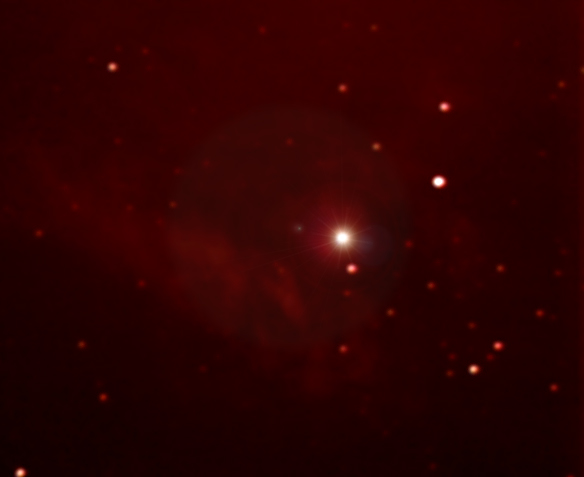
M17: Swan (Omega or Horseshoe) Nebula

RA: 18hr 20min 48min Dec: -16º 11' 00" Mag: 7.5 Distance: 6000 light years Constellation: Sagittarius
Autostar Suite, my star-chart and telescope guidance software names this the 'Swan' nebula although other texts refer to this as the 'Horseshoe' nebula. Perhaps all these names are equally correct, so I have included all of them. This is part of the cluster of nebulae in northwest Sagittarius and Serpens which includes M8, M20 and M16. Although silvery-gray through the eyepiece, long-exposure photography reveals the red of hydrogen, the most abundant element in the cosmos. This photograph was taken on the 27th of September 2005 when the moon was in its final quarter. Viewing conditions were far from ideal - Sagittarius was low on the horizon, it was hazy in the southern sky, and the white floodlights of a nearby outdoor sports facility filled the horizon. I didn't have a broadband filter, which wouldn't have worked anyway on the multiple wavelength white light from the sports facility.
This photograph is the result of only one series of exposures with DSI - 72x15sec exposures, giving a total exposure time of 18 minutes.. Histogram stretching was carried out in favour of the dark level, to extend the contrast of dark. Midtones were increased in each of the RGB channels individually, using the Curves command. Enhancing the midtones to the level at which a dramatic impression could be made resulted in 'blooming' of the stars. Unsharp mask was therefore applied (radius = 1.2, Strength = 300%, Threshold = 3) followed by Gaussian blur (radius =1.5). The lens flare is rendered. I found this command under 'Filters' in Photoshop and thought I would try it.
Problems: probably not a long enough exposure to bring out more detail in the nebulosity. The picture had to be cropped particularly at the right edge because of 'drifting' which I now realise is because the optical tube of the telescope is rear-heavy due to the DSI and its wire. I have ordered a counterweight bracket to attach to the under-side of the optical tube which I hope will make the drifting problem a thing of the past..
HOME PICTURES: Deep Sky PICTURES: Solar system PICTURES: Wide field